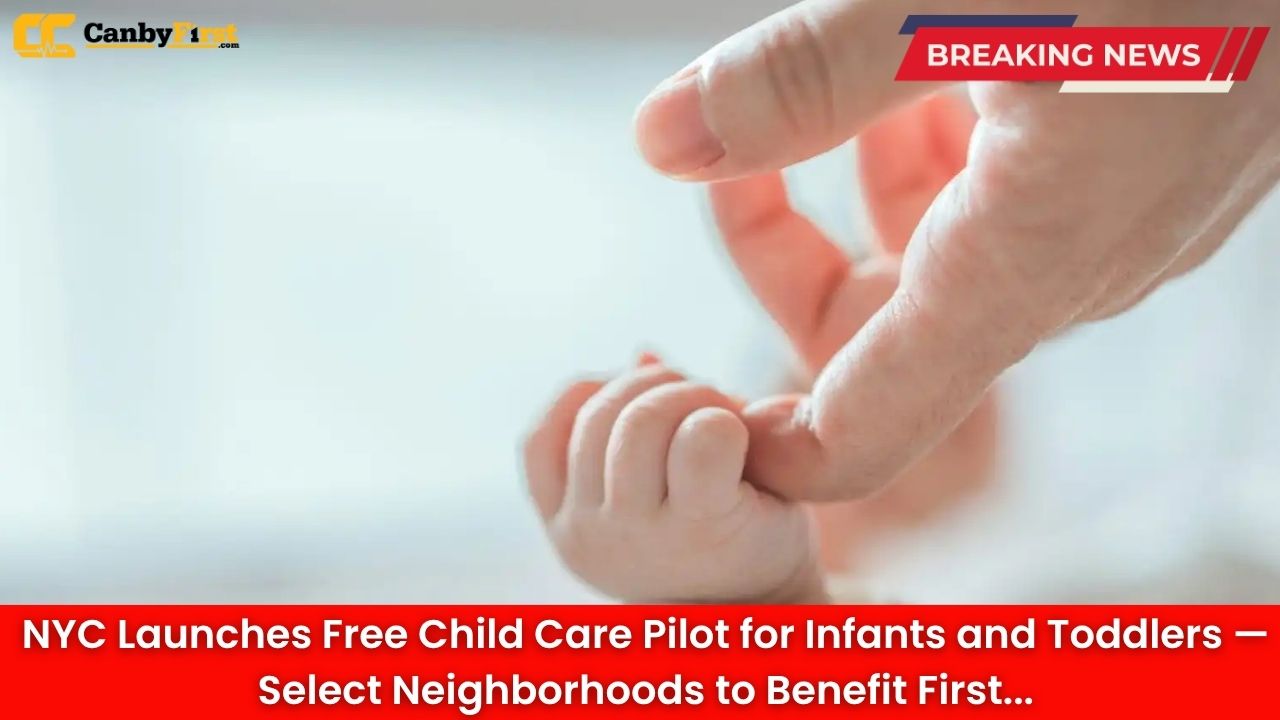New York, US: New York City is rolling out a major new pilot program that will provide free child care for children ages two and under, marking one of the most ambitious expansions of early education services in the city’s history. The initiative, announced by Mayor Eric Adams and city officials this week, aims to ease the financial burden on working families while promoting equitable access to early childhood support.
The pilot will focus on neighborhoods that have long faced economic and infrastructure challenges, targeting families who often struggle to afford even basic child care services. Officials say the program could eventually become a cornerstone of the city’s broader strategy to promote educational equity and workforce participation.
Target Neighborhoods Under the Pilot Program
The first phase of the program will prioritize neighborhoods identified as “child care deserts,” where available slots for infants and toddlers are significantly below demand. Among those receiving priority are parts of the Bronx, Brooklyn, and Queens, including:
Also Read
-
Mott Haven and Hunts Point in the Bronx
-
Brownsville and East New York in Brooklyn
-
Jamaica and Corona in Queens
Families living in these areas will get early access to the new subsidized slots beginning in early 2026. Depending on the results of the pilot, city officials plan to expand the program across more boroughs by late 2027.
The initiative’s neighborhood-based model reflects a shift in city policy—focusing resources where demand is high and availability is low. According to the Office of Early Childhood Education, the goal is to test scalable models that can work citywide without compromising quality or accountability.
How the Program Works
Under the pilot, the city will fund a network of licensed child care providers who offer full-day, year-round care for infants and toddlers up to 24 months old. Unlike partial subsidies or income-tested vouchers, this program will make child care completely free for participants during the pilot phase.
Parents will apply through the city’s child care portal, and eligibility will prioritize families earning under a defined income threshold while also considering household needs such as employment status, caregiver support, and special education requirements.
Each participating center must meet the city’s quality and safety standards, including staff-to-child ratios, certified caregivers, and developmental milestones monitoring. The Department of Education and the Administration for Children’s Services will jointly oversee the project.
Cost and Funding Sources
The pilot is projected to cost about $25 million in its first year, funded through a mix of city resources and federal early childhood grants. Officials said the investment is aimed not just at immediate relief but at long-term social and economic benefits.
According to City Hall estimates, working parents in New York can spend an average of $22,000 per year for child care for children under two—often more than a quarter of their household income. For low- and middle-income families, this burden has led some caregivers, particularly mothers, to leave the workforce entirely.
Mayor Adams characterized the pilot as “a long-overdue step to make New York City the best place in America to raise a child.”
Economic and Social Impact
Advocates for early childhood education have praised the move, noting the growing evidence that high-quality child care contributes to stronger developmental outcomes for children and greater economic stability for families.
Expanding access for children under two, they say, fills a critical gap that has persisted even after the city’s previous expansions of pre-K and 3-K programs. Experts believe this may also help small businesses and employers who have struggled to retain workers due to family care challenges.
Community groups in the pilot neighborhoods also view the program as a potential anchor for broader neighborhood revitalization. Many of these areas experienced closures of child care centers during the pandemic, leaving families with few options.
Challenges Ahead
Despite the optimism, challenges remain. The city’s child care workforce has shrunk in recent years due to low wages and rising operating costs. Recruiting and retaining qualified caregivers will be essential to sustaining and expanding the program.
There are also concerns about capacity and oversight. Some advocates warn that without sufficient infrastructure or steady funding, the pilot could overwhelm existing providers or create waiting lists that frustrate families.
City officials say they are addressing these issues by partnering with community-based organizations and expanding training pipelines for new child care workers. A portion of the funding will be reserved for facility upgrades and workforce development initiatives.
What Comes Next
If successful, the pilot could lay the groundwork for universal child care for all children under three in New York City. The administration plans to collect data on usage, family satisfaction, and developmental outcomes during the first two years of operation to inform future policymaking.
Families in priority neighborhoods will receive more details in early 2026, including information on how to apply and which centers are participating. The city expects to open applications by spring.
As New York seeks to strengthen its economy and foster more equitable opportunities for working parents, the free child care pilot stands out as one of the boldest social programs in the nation. For families of infants and toddlers—especially those in areas historically overlooked—the promise of free, high-quality care could mark the beginning of a new chapter in New York’s commitment to its youngest residents.












